Analysis
How Dealers Are (Slowly) Rebooting Their Businesses to Take Software-Based Art Mainstream
At Art Basel 2018, there are signs the art market is finding a language to contextualize technology.
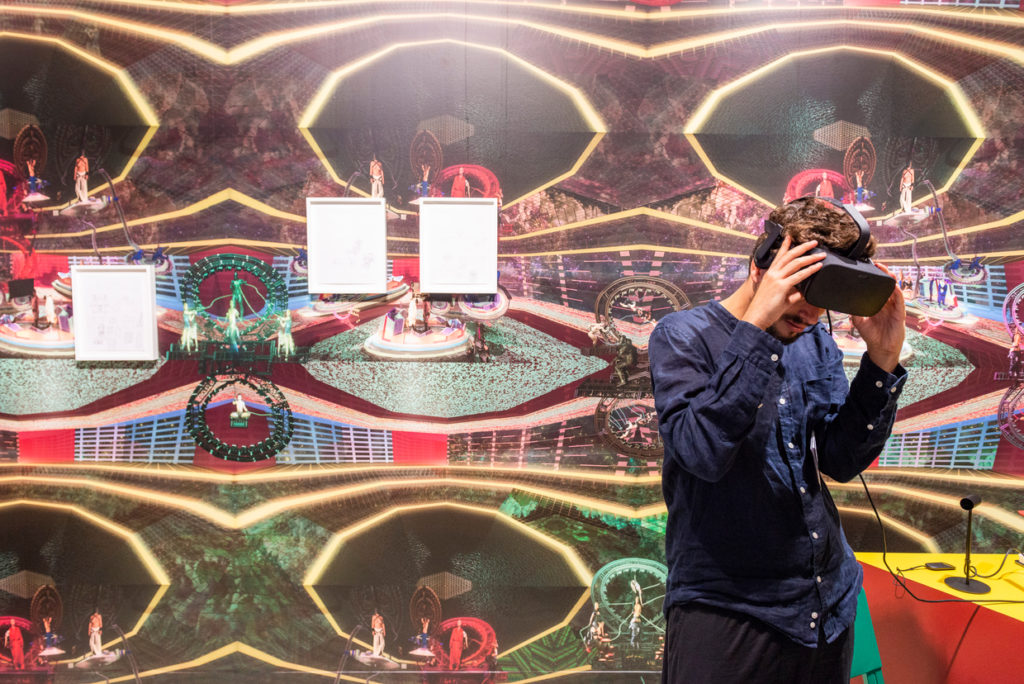
At Art Basel 2018, there are signs the art market is finding a language to contextualize technology.

Tim Schneider

Seven years after technologist, venture capitalist, and art collector Marc Andreessen declared that “software is eating the world,” the meal seems complete. Digital products and services intersect with every element of modern life in 2018, from urban navigation to restaurant selection to matchmaking.
And yet, the majority of the art market—a world that, at least on paper, should be the vanguard of creative progress—usually only engages with software-based artworks a few times a year. With the exception of cryptocurrency fever, this usually happens in reaction to news-making events in Silicon Valley (such as Bay Area art fairs) or the rare significant exhibition mounted under the banner of new-media stardom (such as the New Museum Triennial).
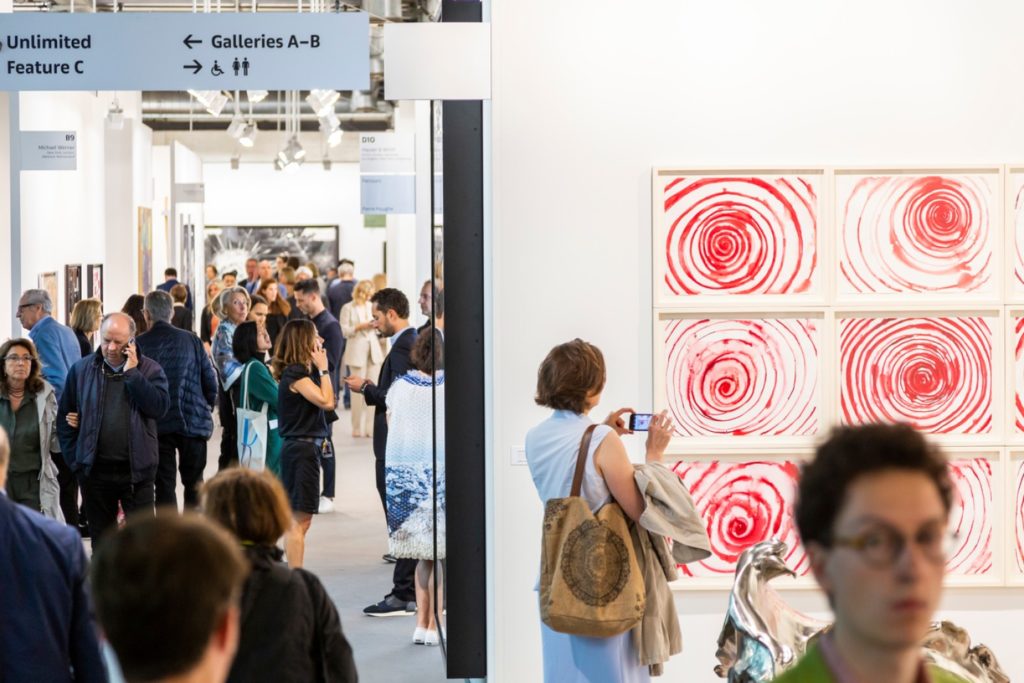
Art Basel 2018. Image © Art Basel.
To learn something about how software-based works are (or aren’t) circulating between buyers and sellers in 2018, though, it may be valuable to check in at Art Basel, the most important art fair of the year for all modern and contemporary art, not just the rare trade show geared toward Silicon Valley wealth. Upon review, the fair’s opening days revealed signs of visible progress, even at the upper echelons of the market—but only in certain conditions, and still at a rate that noticeably lags far behind software’s penetration into the rest of our lives. Understanding why holds important clues towards understanding how this category of art may move forward.
For the uninitiated, the general (though not ironclad) rule of Art Basel’s Gallery section is this: Premier, blue-chip galleries get to set up shop on the ground floor of the convention center, while younger, (relatively) more avant-garde galleries present on the floor above. Granted, trying to complete a full scan for anything among the thousands of artworks on Art Basel’s ground floor verges on hopeless. But I managed to identify less than 10 software-based pieces on the ground floor this year.
I almost assuredly missed a few. Still, I’m confident that I’m not off by an order of magnitude. (Note: I excluded anything not originally created on, or run through, software, meaning I excluded all traditional film and video works. These deserve their own detailed set of analyses—and already received one worth reading elsewhere.)
A few of the examples at Art Basel reveal something sensible: The high-end galleries promoting new media artists are not treating them as speculative oddities. They are doing the hard—and necessary—work of integrating those artists into their larger programs, and providing an art-historical context for them.
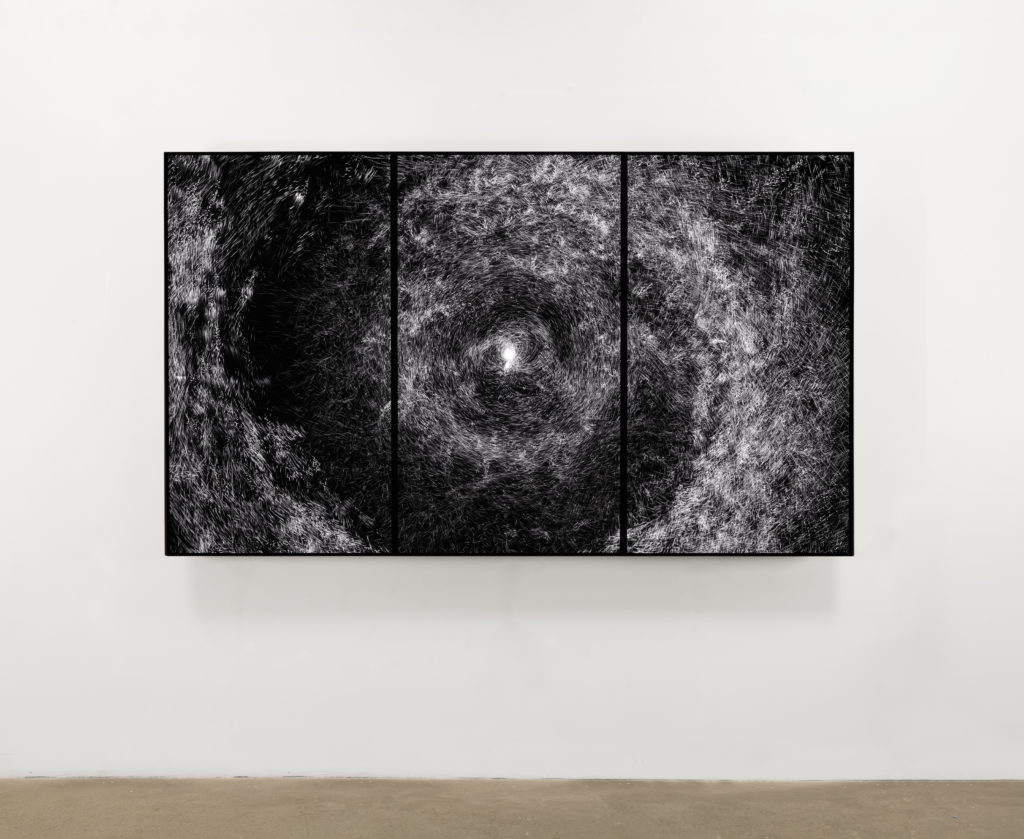
Leo Villareal, Signature of the Visible. Image courtesy Pace.
Arguably the strongest software-based presence on the ground floor at Art Basel 2018 flew under the banner of Pace. On an outside wall of their booth, Pace showed Leo Villareal’s Signature of the Invisible (2018), a triptych of OLED monitors hosting a mesmerizing gray-scale abstraction that evokes a solar system continuously forming and breaking apart. Made as an edition of five (plus one artist proof), the work was priced at $175,000.
Pace’s Nicolas Smirnoff immediately centered Villareal’s work in the larger context of Future\Pace, the arm of the gallery exclusively dedicated to championing new media artists such as teamLab, Random International, and Villareal himself for public commissions. At the same time, he also prominently positioned Villareal in relation to an earlier generation of boundary-pushing Pace artists.
“Villareal is following in the footsteps of Robert Irwin and James Turrell,” Smirnoff said. In Pace’s eyes, what matters most is that Villareal is working with the same principles as the Light and Space movement. That he’s doing it via custom software—as Turrell has himself been doing for years now—is incidental. New media or not, the shared themes link the younger Villareal to art history, rather than divorcing him from it. Combined with the appealing graphic nature of the piece, any frame of which could work as a traditional abstract canvas, this context provides a way to ease media-wary collectors into the waters of progress.
A similar process brought Michal Rovner’s Blue Crossing (2018) to Pace/MacGill’s booth next door. The subtly kinetic piece consists of digitally manipulated video footage shot by the artist and composited into an endlessly looping composition. In it, lines of anonymous human figures continuously march past one another against a painterly blue landscape. Their movements are so subdued, in fact, that viewers I saw investigating the piece tended not to realize it was time-based until they’d already been admiring it for a few moments.
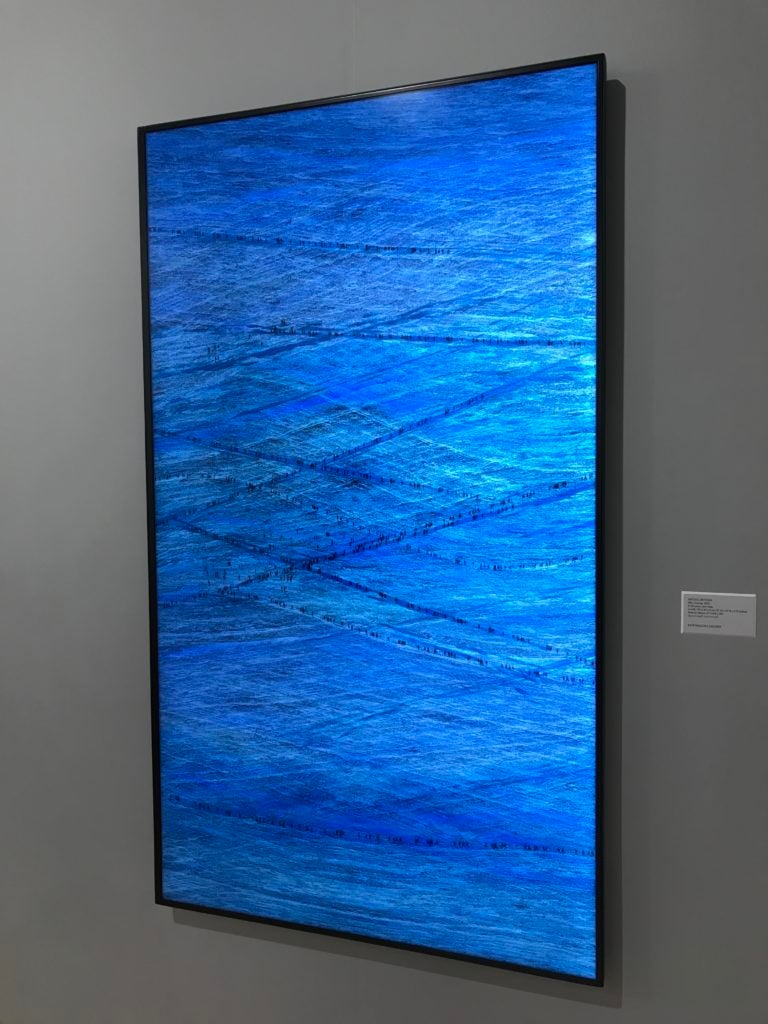
Michal Rovner, Blue Crossing (2018). Photo by Tim Schneider.
Along with Rovner’s established reputation, the subtlety of the work helped integrate it alongside the static photographs filling the rest of Pace/MacGill’s booth. The lines between traditional media and new media also blurred more aggressively the deeper you looked. For instance, when asked about Rovner, co-founder Peter MacGill immediately related Blue Crossing to a digitally constructed photograph by ageless star David Hockney on a nearby wall.
“That piece is really 3,000 pictures stitched together [digitally],” said MacGill. “And Hockney is in his eighties. Whether you’re a painter or a sculptor or any other artist, you have to embrace new media now.”
Thanks to the integration of digital technology into the life of the average person, MacGill suggested that software-based works have the power to “intersect art with the community” to a greater degree. In that sense, new media work enables “an inversion of the pyramid” of collecting, establishing a connection that feels like it is “for the masses” in a way that paintings, sculptures, and other classic media simply do not.
It’s difficult to say exactly how much of this context affected Rovner’s results in the booth. But Pace confirmed that one of Blue Crossing’s five editions (plus two artist proofs) sold Wednesday for $150,000.
Another well-established gallery went deeper and further afield to establish intelligent links between software-based work and art history. On view in the Mayor Gallery’s booth at a $45,000 price was Miguel Chevalier’s Méta-Cités (2015), a 121-minute abstract video composition running off of an encrypted USB key and a Raspberry Pi mini-computer.

Miguel Chevalier, Data-Cities (2018). Image courtesy of the Mayor Gallery.
Director Christine Hourdé drew parallels between Chevalier’s works—which he has been generating through software for roughly four decades—to the late new media pioneer and fellow Mayor artist Robert Mallary, who is generally credited with creating one of the first computer-designed sculptures in 1968.
Yet Hourdé also placed the Chevalier piece in the context of the gallery’s history with early “motor-powered artworks” by the likes of Jean Tinguely and Group ZERO members Heinz Mack, Otto Piene, and Günther Uecker. (The gallery counts all three of the latter among its roster.) In fact, she even related Chevalier just as strongly to a subset of entirely static works in the gallery’s program—in particular, Concrete artists such as Klaus Staudt and geometrical abstractionists such as Robert Mangold and Victor Vasarely.
These comparisons help dispel a common misconception about new media works: that they are always best understood in the context of other new media works.
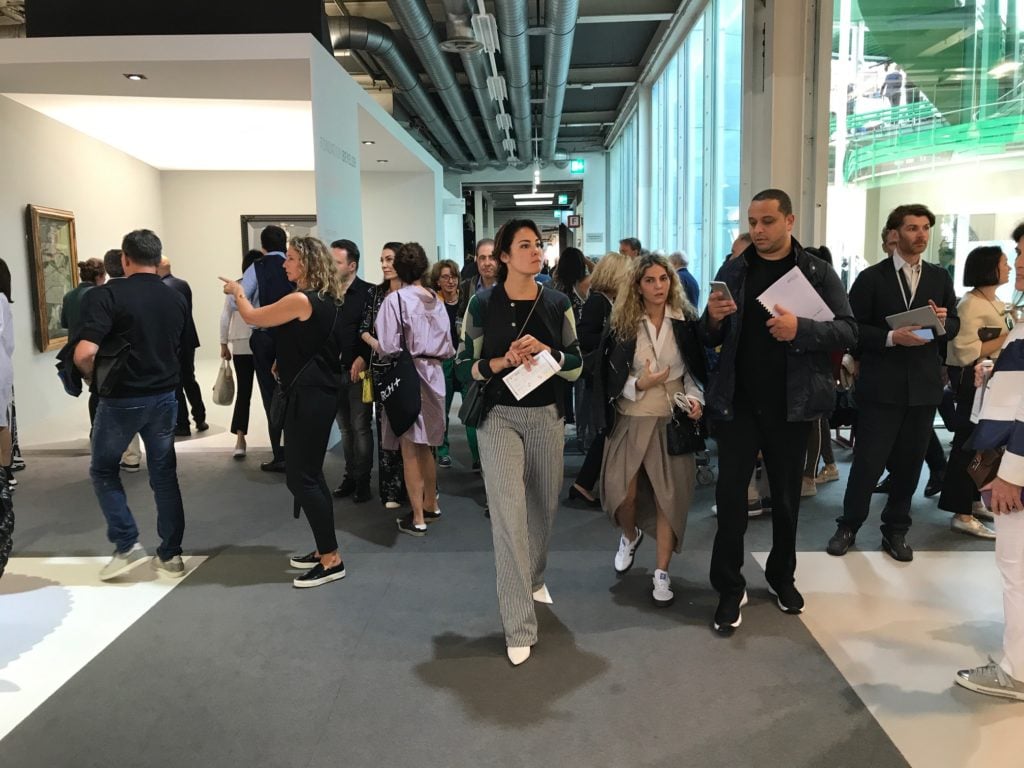
The upper floor at Art Basel 2018 on opening day. Image courtesy Tim Schneider.
Upstairs, where time-based media had a markedly stronger presence throughout, this same theme echoed in the comments of artist Gary Hill. The new-media-centric bitforms gallery featured Hill’s sculptural video pieces from the 1990s in its booth in the Feature section of Art Basel 2018. Asked about software-based works’ slow slog to market legitimacy among traditionalists, the artist suggested part of the problem was faulty assumptions about their lineage. “I could show you media pieces here [at Art Basel] that have much more to do with paintings than with anything else,” said Hill.
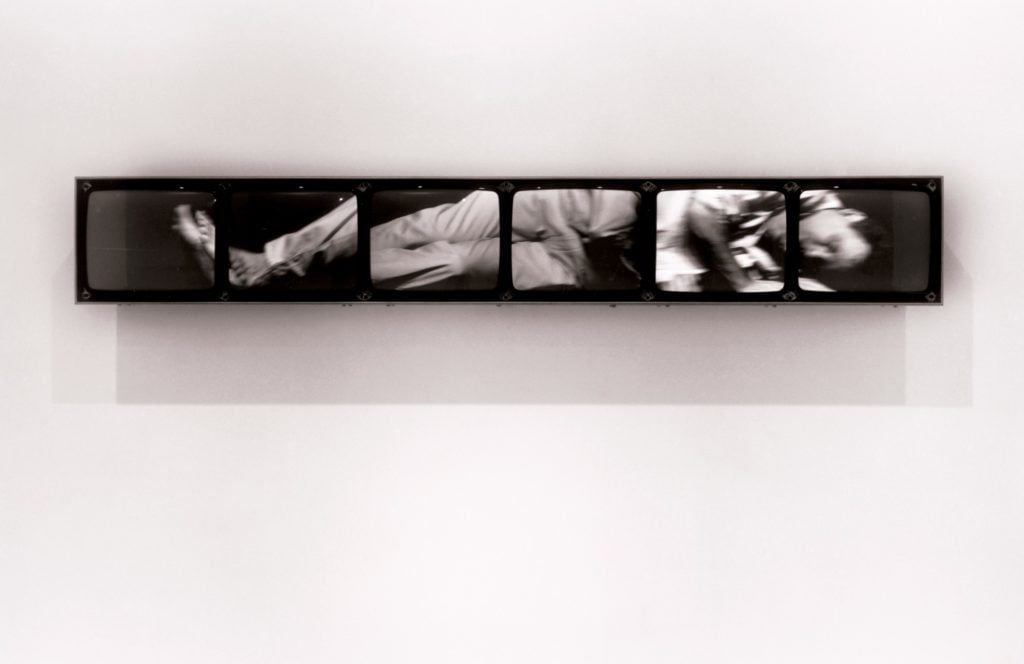
Gary Hill, Conundrum (1995–1998). Image courtesy of bitforms gallery.
In his mind, part of the issue could actually be seen as a more generalized critique of the art market. “Conceptual media art already had its heyday” in the ‘90s, remarked Hill. “The audience concerned with ideas is less than five percent, or maybe even less than one percent” of the collecting population today.
But Steve Sacks, who founded bitforms in 2002, nuanced that idea when I returned a day later. Although he admitted that in the past he had thought that software-based collecting would pick up faster than it has, he also suggested that the over-estimation owed to an early misunderstanding of most art buyers. “I didn’t realize how traditional and conservative the art world was,” said Sacks. “Collectors are generally pretty cautious.”
At the same time, Sacks does believe that real progress has been made in the spread of new media collecting, even at the high end of the gallery system. He credited part of the change to institutions, whose increased interest in exhibiting and acquiring time-based media has trickled down to private buyers likely to remain hesitant without museum validation.
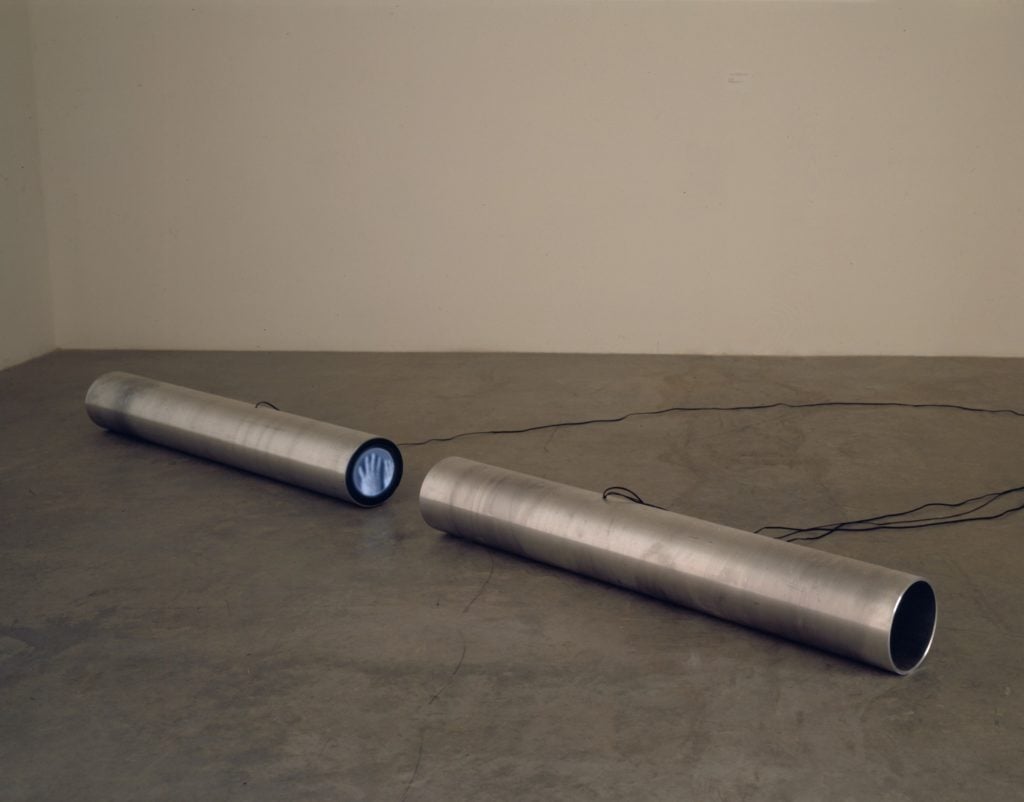
Gary Hill, Cut Pipe (1992). Image courtesy bitforms.
Europe has also been earlier to embrace this category than other regions—a sentiment echoed frequently by various people interviewed for this piece. Hill’s work, for instance, has already entered esteemed institutional collections across the continent, including the Schaulager here in Basel.
But there remain at least two other major considerations pushing new media collecting forward.
According to Sacks, part of the tricky new-media equation owes to the evolution of software. He describes himself as a big believer in “dedicated systems” capable of showing many software-based works interchangeably in a home setting. “If you think about the biggest cities, even the biggest collectors don’t have massive apartments,” he said. By installing an apparatus that can host multiple new media works, once-wary collectors “tend to get excited” about the prospect of more heavily collecting works that are adaptable to the same screen setup.
Just as important is a greater focus on the future, from all sides of the market. “Preservation has also become a big part of the conversation” for digital works, says Sacks. “It used to be much more of a Wild West playground.” But now improved practices among media artists and galleries are beginning to install a new level of confidence.
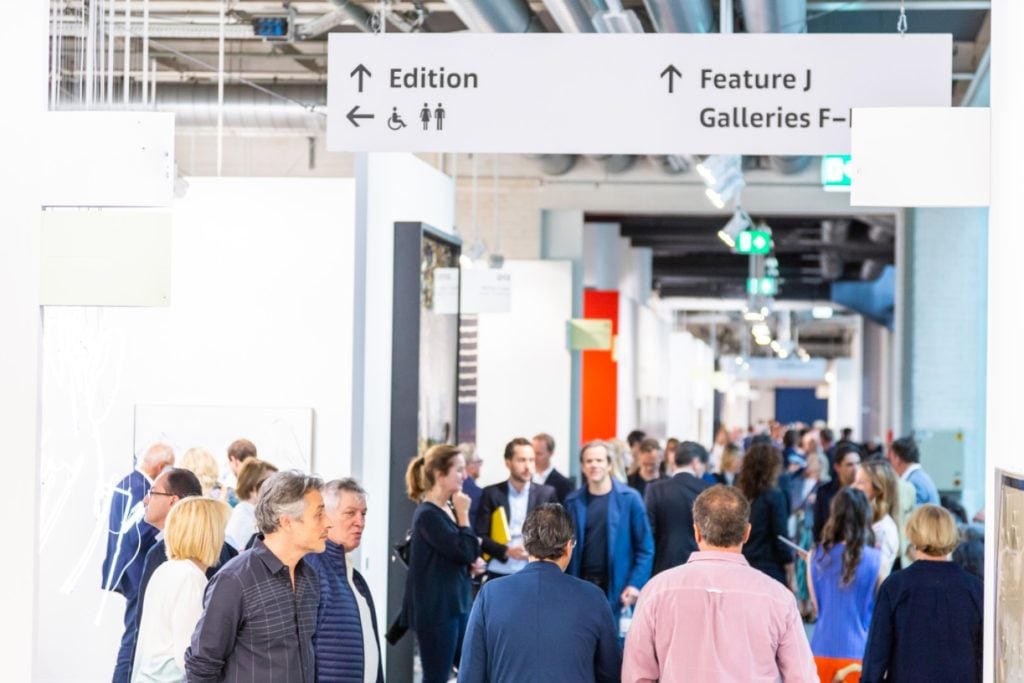
Art Basel 2018. Image © Art Basel.
In particular, a younger generation of new media artists are helping to drive positive change, according to Georgia Harrell, a private collection manager with a time-based media focus. “With a lot of hyper-contemporary artists, they’ve grown up looking at the conservation problems with, say, Nam June Paik, and they’ll sit down and say, ‘So I’ve already thought about what this should look like in 100 years.'”
This is a critical development, since she highlights that there are—and will always be—inherent differences between collecting traditional works versus new media.
“Time-based media requires you to redefine your position on ownership,” explains Harrell. “It’s more stewardship than ownership, because it instantly is a collaborative process with a whole team of people. You’re not autonomous in the care of the work.”
Nor is it simply about keeping technical components in good working order. “You have to maintain the artist’s intent,” she explains—especially as hardware and software continue to develop. “You have to be in constant contact [with the studio]. And if the artist isn’t available for this, then you’re working with their estate, or their programmers, or their conservators—people who have a background in dealing with the materials, the same way that those who did the wall drawings with Sol LeWitt carry on the process and help define what the parameters of the work are.”
These extra considerations undoubtedly blunt new media works’ penetration of the collecting population. “In a pure cost assessment, you can’t just look at buying the work as a finite experience,” summarizes Harrell. “The process is iterative—and that has cost implications that you have to consider ahead of time. I think that’s a barrier to entry for new collectors.”
All of these considerations place software-based artwork, and time-based media more generally, as experiencing exactly the kind of learning curve one should expect from genuinely progressive works. And the intelligent, selective buy-in of top-level galleries doesn’t just show that media art is gaining influence in the upper echelons of the market. It also helps pave the way for even greater, more revolutionary progress on the bleeding edge.
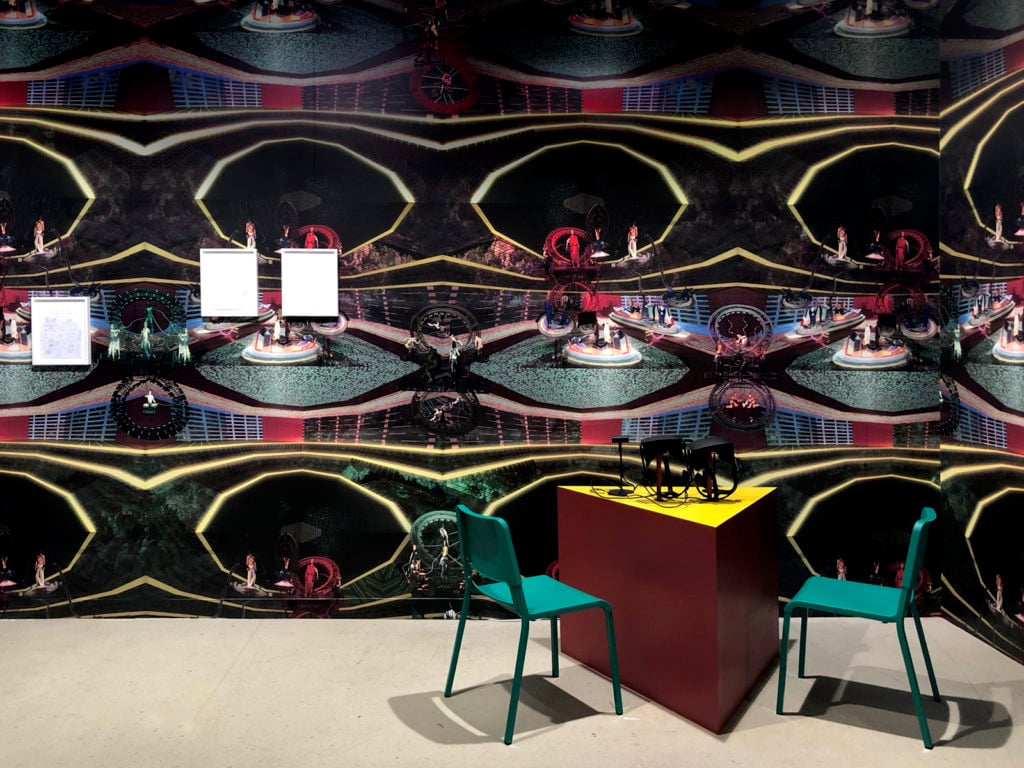
installation view of Morán Morán’s Statements booth of Jacolby Satterwhite works at Art Basel 2018. Image courtesy of Morán Morán.
“The more that other galleries”—particularly commercially elite ones—“are bringing in media artists, the better it is for us,” says Sacks, with the “us” meaning the smaller, pioneering galleries focused on this space. Think of it as a two-way exchange between the upper tiers of the traditional gallery hierarchy and the sellers devoted to chopping their way through the jungle of digital work, day in, day out.
The trailblazers help push these media into new territory while building a base of support in the culture, particularly among younger and more forward-thinking audiences. Then institutions and high-end galleries provide commercial validation for a subset of star media artists, whose visibility can make the digital avant-garde more appealing to more conservative collectors.
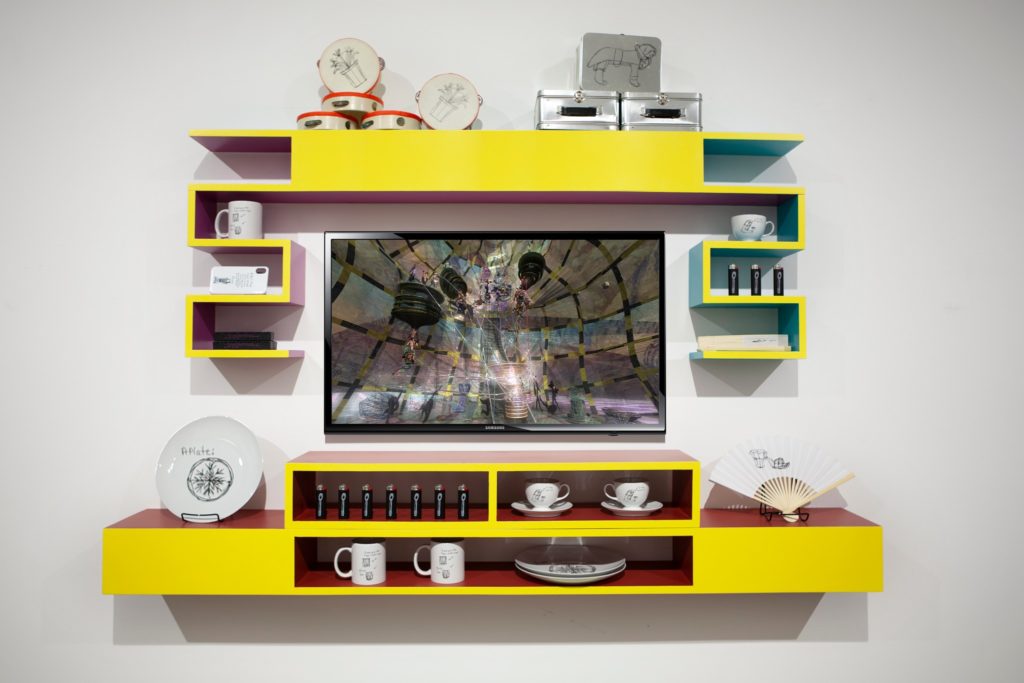
Jacolby Satterwhite,
Entertainment Center (2018). Image courtesy Morán Morán.
Morán Morán Gallery, whose booth at Art Basel’s Statements section features a virtual reality work by Jacolby Satterwhite, backs up this theory. Satterwhite’s “inclusion in biennials and museum exhibitions over the last 10 years paved the way for other artists to create VR works and expand the field,” co-founder Al Morán wrote by email. “As collectors become more familiar with the VR experience through these institutions, the perceived challenges of collecting the work start to slowly peel away.” The same goes for these pioneers of software-based art in general.